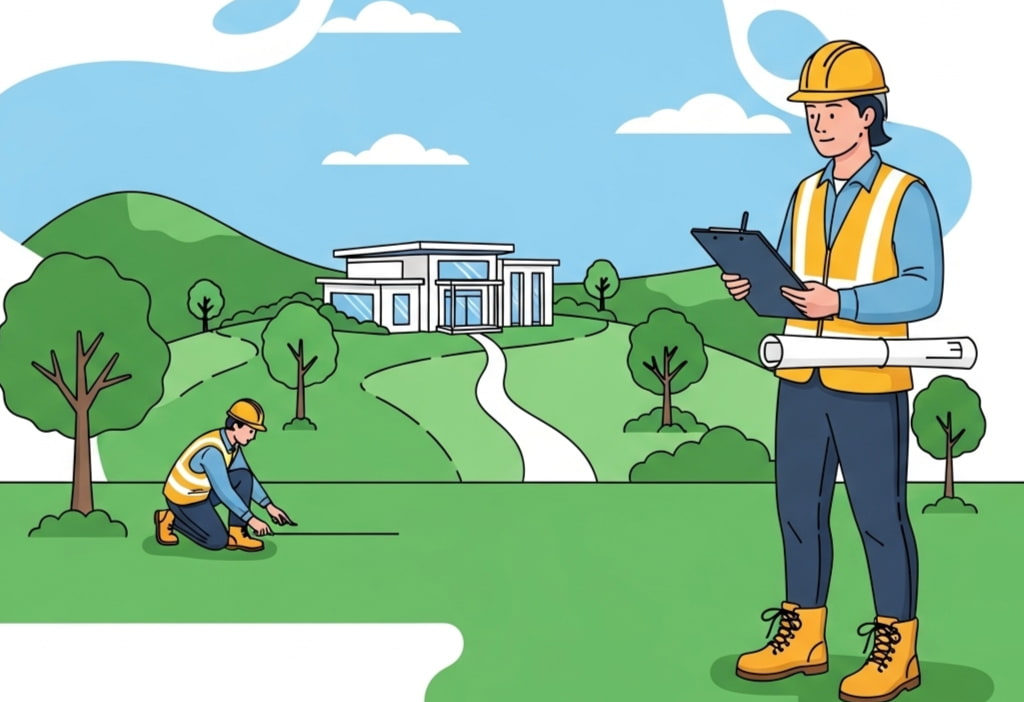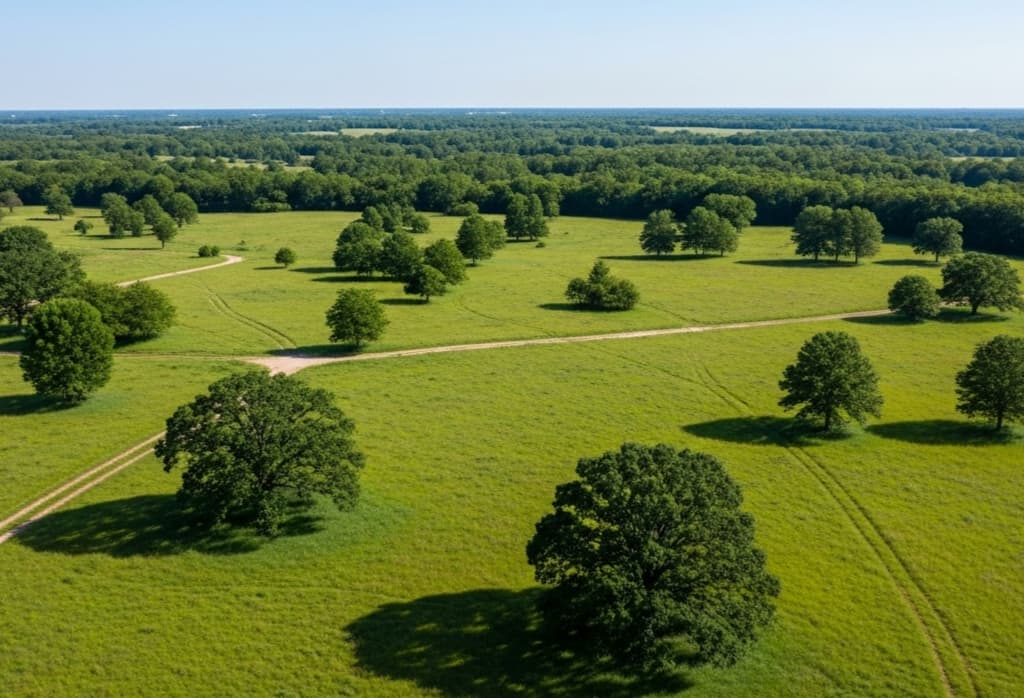The Phase 1 Environmental Site Assessment Cost is crucial for anyone involved in real estate or environmental compliance. A Phase 1 ESA costs between $1,800 and $6,500, depending on the property’s size, type, history, location, and regulatory requirements. This assessment identifies potential environmental liabilities, such as contamination or hazardous substances, helping buyers, lenders, and developers make informed decisions.
A Phase 1 ESA includes on-site inspections, historical research, regulatory database reviews, and interviews with owners or occupants. The final report indicates whether a Phase 2 ESA is needed, which involves detailed testing of soil, water, or building materials to confirm contamination.
Investing in a Phase 1 ESA early can save significant costs. For example, a simple residential property may cost around $2,000, while a large industrial site with a complex history could exceed $6,000.
This guide explains Phase 1 ESA components, cost factors, Phase 1 vs Phase 2 comparisons, and tips for selecting the right environmental assessment company. With this knowledge, you can approach property transactions confidently and avoid unexpected liabilities.
Average Phase 1 Environmental Site Assessment Cost
Phase 1 Environmental Site Assessment costs vary based on property size, type, complexity, and location. These averages help you plan your budget and compare providers effectively.
Typical Cost Range: A Phase 1 ESA costs between $1,800 and $6,500 for most properties. Smaller residential sites with straightforward histories usually fall at the lower end, while larger commercial or industrial properties with complex pasts approach the higher end. Property size, previous land use, and regulatory history often drive costs toward the higher end.
Cost by Property Type
- Residential properties: $1,800 – $2,500
- Small commercial properties: $2,500 – $4,000
- Industrial or complex sites: $4,000 – $6,500
Comparison with Phase 2 ESA: If potential contamination is identified during a Phase 1 ESA, a Phase 2 assessment may be required. Phase 2 ESA costs are higher, typically from $5,000 to $15,000, depending on the complexity and sampling requirements.
NEPA Environmental Assessments evaluate potential environmental impacts for projects, typically costing $5,000 – $20,000 for smaller projects. ALTA Surveys are detailed land surveys that identify property boundaries and easements, costing $2,500 – $10,000 depending on property size and requirements.
Visual Overview
| Property Type | Typical Phase 1 ESA Cost | Notes |
|---|---|---|
| Residential | $1,800 – $2,500 | Simple histories, low risk |
| Small Commercial | $2,500 – $4,000 | Moderate complexity |
| Industrial/Complex | $4,000 – $6,500 | Detailed research and inspections |
To estimate your property’s likely Phase 1 ESA cost, consider its size, past use, and any known environmental issues. Larger, industrial, or historically complex sites generally fall toward the higher end of the cost range.
These estimates provide a practical reference for budgeting and evaluating whether a property may require further investigation.
Phase 1 vs Phase 2 Environmental Site Assessments
The Phase 1 Environmental Site Assessment Cost identifies potential environmental concerns, while a Phase 2 ESA investigates these concerns in detail. Recognizing the distinction helps property owners, buyers, and lenders anticipate costs and requirements.
Phase 1 ESA focuses on identifying recognized environmental conditions (RECs) and signs or evidence of potential contamination through historical research, site inspections, database reviews, and interviews. It does not include physical sampling of soil, water, or materials.
Phase 2 ESA is conducted only if Phase 1 identifies potential issues. Assessors test and sample soil, water, or building materials to confirm the presence and extent of contamination. Properties with complex industrial histories, multiple suspected contaminants, or larger sites generally incur higher Phase 2 costs.
Cost Differences
- Phase 1 ESA: $1,800 – $6,500
- Phase 2 ESA: $5,000 – $15,000, higher for complex industrial sites or projects requiring many samples
Timeline Differences
- Phase 1 typically takes 2–4 weeks.
- Phase 2 can take several weeks to months, depending on the number of samples and laboratory analysis required.
When Phase 2 is Required
Phase 2 assessments are triggered when Phase 1 identifies RECs or uncertainties that need verification, such as past chemical spills, underground storage tanks, or historical industrial use. To anticipate Phase 2 needs, consider the property’s past uses and any prior environmental reports.
For example, a Phase 1 ESA may reveal potential soil contamination if a former gas station property is being purchased. Assessors then conduct Phase 2 soil and groundwater testing to measure contamination levels and guide remediation strategies.
What a Phase 1 Environmental Site Assessment Includes
A Phase 1 Environmental Site Assessment Cost involves a systematic process to identify potential environmental concerns at a property. Each assessment is thorough, ensuring buyers, lenders, and developers understand any existing or potential liabilities. The main components include:
Site Visit and Visual Inspection: Assessors examine the property for signs of contamination, such as stains, chemical storage areas, or hazardous materials. They also check the surrounding area for off-site sources, like industrial sites or landfills. A common finding might be a leaking storage tank or soil staining from past chemical use.
Historical Records and Property Review: Assessors review past ownership, land use, zoning, and permits. Properties with industrial history or known contamination require more attention, which can increase costs.
Regulatory Database Search: Assessors check federal, state, and local databases for spills, cleanups, or violations. These records help determine if additional investigation or remediation is needed.
Interviews with Owners or Local Authorities: Direct interviews provide context not found in records. Complex or unusual property histories often require more interviews, affecting cost.
Report Preparation: Assessors compile findings into a detailed report with a professional opinion on further investigation. The report supports property negotiations, insurance, and remediation planning.
Each of these steps contributes to the overall cost of a Phase 1 ESA. Larger properties, sites with complex histories, or locations with regulatory complications generally require more extensive research and inspections, which increases the assessment cost.
What Affects the Cost of a Phase 1 ESA
The Phase 1 Environmental Site Assessment Cost varies depending on several factors. These factors help you anticipate expenses and plan accordingly.
Property Size and Type: Larger properties require more time for site visits and inspections, increasing the cost. Commercial or industrial sites often involve more complex assessments due to potential historical contamination, which typically drives higher fees.
Location and Accessibility: Properties in remote or difficult-to-access areas may cost more because of travel and logistical challenges. Urban sites with easier access usually have lower inspection costs.
Site History and Complexity: A property with a long industrial history, previous hazardous waste storage, or known environmental issues requires deeper research and analysis. This factor often has the most significant impact on overall cost.
Urgency and Expedited Reports: Some firms charge additional fees for expedited service if a Phase 1 ESA report is needed quickly. Planning and scheduling flexibility can help manage costs.
Regulatory Requirements: Assessors check federal, state, and local environmental databases for documented spills, cleanups, or violations. Sites in regions with stricter reporting or documentation rules may take longer to assess, which can raise the price.
For example, a Phase 1 ESA for a 2-acre former manufacturing site in an industrial zone may cost $5,000 due to its complex history, database searches, and detailed inspections. In contrast, a 0.5-acre residential property with minimal prior use might cost around $1,800.
How Long a Phase 1 ESA Takes and How Long It Lasts
A standard Phase 1 ESA usually takes 2 to 4 weeks from the initial site visit to the final report delivery. Assessors complete scheduling and conduct the site visit, review historical records and regulatory databases, interview property owners or local authorities, and compile the written report. Complex properties or sites with extensive historical research may slightly extend the timeline. Hard-to-access records or unusual property histories can also add time.
Report Validity: Phase 1 ESA reports are generally valid for 6 to 12 months. After this period, the information may no longer accurately reflect current site conditions, especially if the property has undergone construction, renovation, or environmental incidents. Buyers, lenders, and insurers often require an updated assessment if significant time has passed.
The due diligence process, which evaluates a property before purchase or financing, should include the Phase 1 ESA early. Schedule the assessment to allow sufficient time for review and potential Phase 2 investigations. Planning helps avoid extra costs or delays caused by an outdated report.
Awareness of timeline and report validity helps stakeholders make informed decisions, avoid surprises, and align environmental assessments with broader property transaction schedules.
Other Costs to Keep in Mind
When budgeting for a Phase 1 Environmental Site Assessment, consider additional assessments and surveys as part of the due diligence process.
ALTA/NSPS Surveys: ALTA (American Land Title Association) or NSPS (National Society of Professional Surveyors) surveys map property boundaries and physical features. Depending on property size and complexity, these surveys typically cost $2,500 – $10,000. They are often required for commercial properties and provide essential context for environmental assessments.
Environmental Inspections: Assessors may conduct specialized inspections for asbestos, lead-based paint, or mold hazards. These inspections are separate from the Phase 1 ESA and can add to overall costs depending on the property’s history and findings.
Integration with Due Diligence: A Phase 1 ESA is one component of comprehensive due diligence. Combining it with ALTA surveys and environmental inspections ensures all potential risks are identified before closing. Planning and bundling assessments can optimize time and reduce unnecessary costs, especially for larger or complex commercial and industrial sites.
A commercial developer purchasing a former warehouse may budget $4,000 for a Phase 1 ESA, $3,500 for an ALTA survey, and $1,500 for an asbestos inspection. Considering these combined costs upfront allows for better financial planning and informed decisions.
Choosing the Right Environmental Assessment Company
Selecting a reputable environmental assessment company ensures accurate results, reliable reporting, and informed decision-making during property transactions.
Experience and Expertise: Choose firms experienced in Phase 1 ESAs for properties like yours. Companies handling industrial, commercial, and residential sites bring practical insights. Inexperienced firms may cause delays, incomplete reports, or higher costs.
Company Size and Reach: Local firms know regional regulations and historical records, which can speed up research. National firms offer broader resources, advanced databases, and standardized reports. Professional certifications indicate verified expertise.
Fee Structure: Firms may charge flat fees or hourly rates. Complex, industrial, or urgent projects typically cost more. Request detailed proposals to understand the scope and avoid unexpected expenses.
Reputation and References: Check client reviews, past projects, and certifications. Established firms assure accuracy and thoroughness.
For example, a buyer considering a former industrial property may opt for a local firm familiar with historical chemical storage sites. This firm’s insight into regional environmental issues can lead to a more efficient and thorough assessment, saving time and money.
Choosing the right company ensures the Phase 1 ESA provides reliable information, supports regulatory compliance, and guides subsequent Phase 2 investigations if required.
Conclusion
The Phase 1 Environmental Site Assessment Cost and scope are essential for anyone involved in property transactions, whether residential, commercial, or industrial. Typical costs range from $1,800 to $6,500, influenced by property size, type, location, site history, and regulatory requirements. More complex properties or industrial sites may require additional assessments, such as Phase 2 ESAs involving soil or water testing, ALTA surveys, or specialized environmental inspections.
A Phase 1 ESA includes site visits, historical research, regulatory database reviews, which check federal, state, and local environmental records, interviews, and detailed reporting. Whether regional or national, selecting the right ecological assessment company ensures thorough, accurate, and actionable results.
Reports are generally valid for 6 to 12 months; the assessment process typically takes 2 to 4 weeks. Planning and prioritizing assessments based on property size, history, and complexity helps manage costs and avoid unexpected liabilities.
FAQs
What is a Phase 1 Environmental Site Assessment?
A Phase 1 ESA is a professional evaluation of a property to identify potential environmental risks, such as contamination from hazardous substances. It includes site inspections, historical research, regulatory database reviews, which check federal, state, and local environmental records, and interviews.
How much does a Phase 1 ESA cost?
Typical costs range from $1,800 to $6,500, depending on property size, type, location, and historical complexity. Due to additional research and inspections, industrial or commercial sites with complex histories tend to be more expensive.
How long does it take to complete a Phase 1 ESA?
The process usually takes 2 to 4 weeks, including site visits, research, interviews, and report preparation. Complex properties may require additional time. Timelines vary with property type, size, and history.
How long is a Phase 1 ESA report valid?
Reports are generally valid for 6 to 12 months. If significant changes occur at the property after that, a new assessment may be required.
When is a Phase 2 ESA needed?
A Phase 2 assessment is conducted only if the Phase 1 ESA identifies recognized environmental conditions (RECs), signs of potential contamination, or uncertainties requiring soil, groundwater, or building materials testing.
What factors affect the cost of a Phase 1 ESA?
Factors include property size, type, location, historical complexity, regulatory requirements, and urgency. Larger or industrial properties typically cost more. Consider your property’s size, history, and complexity to estimate likely costs.




